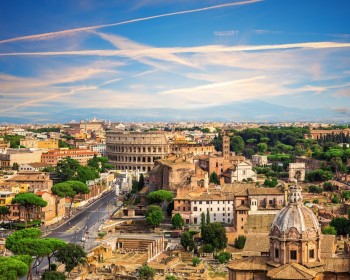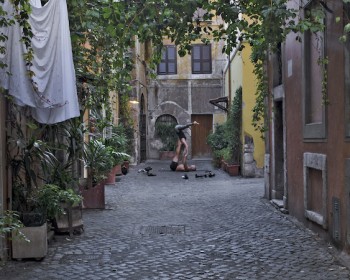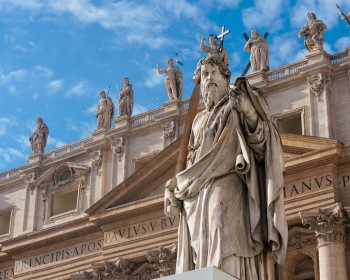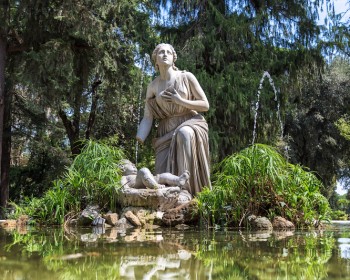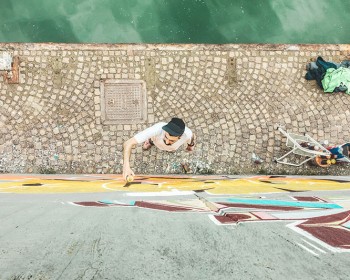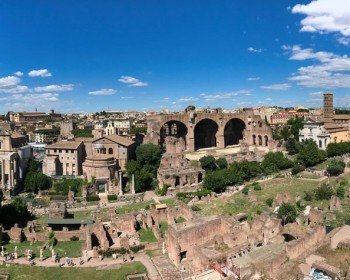It was a lucky and overworked period: popes and cardinals commissioned to artists and architects huge projects, creating and inciting rivalry among them and their noble families too.
Two, in particular, used to face each other to win as many commissions as possible. Gian Lorenzo Bernini and Francesco Borromini were so different. The former was born in Naples, he trained as sculptor like his father, became the favourite architect of seven popes, led a huge studio of employees and had great relationships with clients. The latter instead was from Lombardy, was an architect by profession, used to work alone and slowly, was always described as loner, impulsive, rancorous and quick-tempered, committed suicide and died after a long agony after having pierced his side with a sword.
Bernini and Borromini worked together in Saint Peter’s Basilica and Barberini Palace, where Borromini changed and finished the work started by Bernini. Borromini worked a lot with Pope Innocent X, but Pope Alexander VII didn’t assign any work to him, always preferring Bernini. Unfortunately Pope Alexander VII wasn’t the only one to prefer Bernini and Borromini struggled so much to assert his talent because of many disappointments due to the impossibility of creating his projects according to his modern vision. Since he was not understood by his peers, Borromini often had issues and conflicts with clients and colleagues, especially with Bernini.
The conflict between Bernini and Borromini became legendary, even too much, to the point that many folk legends had been inspired and told for centuries.
Here are the best known:
- The sculptors’ fight in Navona Square
In Navona Square two huge works were built, one in front of the other: the Fountain of the Four Rivers by Bernini and the Church of Saint Agnes in Agone by Borromini. According to tradition, Bernini designed two allegorical figures to make fun of the rival: the Rio de la Plata raises a hand to protect himself from the forthcoming fall of Borromini’s building; the Nile hides his head under a veil to not see Borromini’s weird church. Actually, the covered head shows both that the source of the river was still unknow at that time (and it remained so until the 19th century) and that Africa knew little of Christianity. Borromini answered this offense by adding a small statue of Saint Agnes on the base of the belltower on the right. The statue has a hand on her breast, worried about the stability of Bernini’s fountain because inside it is empty and, in Borromini’s opinion, wouldn’t have supported the heavy Roman obelisk.
These tales are just legends and the proof is that the church was finished a few years later than the fountain. Therefore, Bernini, even if he had wanted, couldn’t have changed his sculptures.
Come with us on our Rome at Twilight Private Tour to discover these huge Baroque works in Navona Square and much more! - Pranks in Palace of the Propagation of the FaithBernini was commissioned the enlargement of the Palace of the Propagation of the Faith in Rome. However, after the death of Pope Urban VIII, the work was assigned to Borromini. The irony of faith was that Bernini lived in a house next to the Palace. Consequently, Borromini fall into temptation and it is said to have engraved two donkey’s ears addressed to Bernini, who reacted by sculpting a phallus on the eaves of his house facing Borromini’s construction site. For public decency, both acted to chip their creations away. You won’t believe it, but it seems that this tale was history and not a folk fantasy!
If you want to know more, especially about Borromini, enjoy our Best of Baroque Rome Tour!
Bernini was buried with all honors in the Basilica of Saint Mary Major; Borromini, despite he built a chapel in the Church of Saint Charles at the Four Fountains for his own remains, was rejected because he commited suicide and was buried in the Church of Saint John of the Florentines.
Did you expect geniuses to bicker like children? Have you ever been in a space created by Bernini or Borromini? Which one did you like the most and why?




